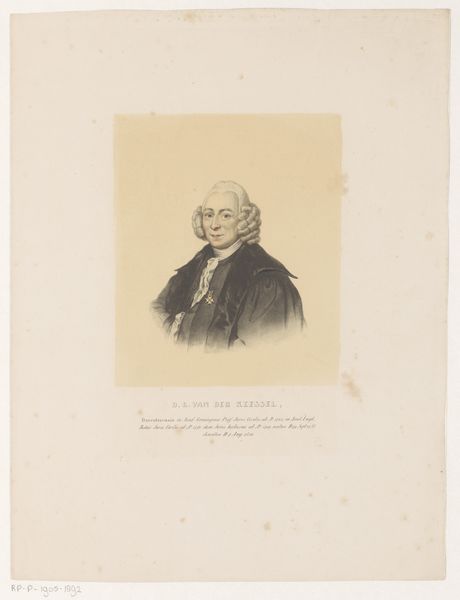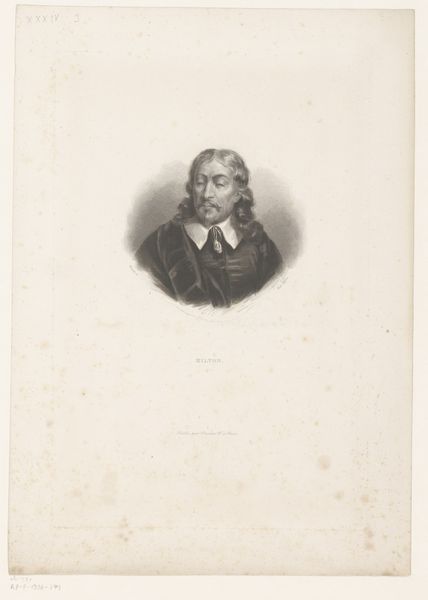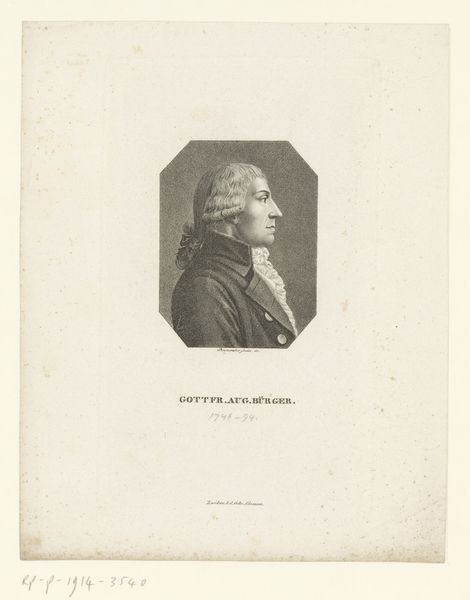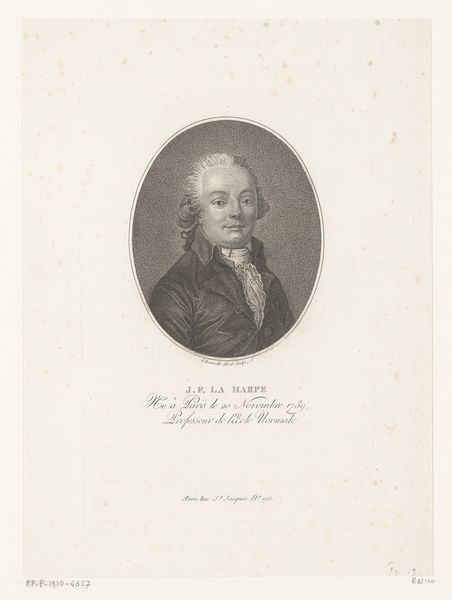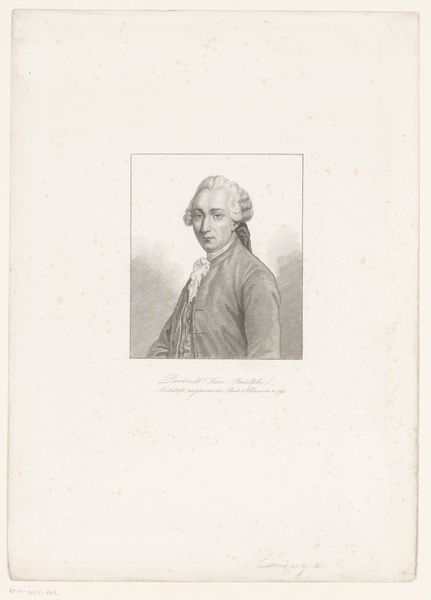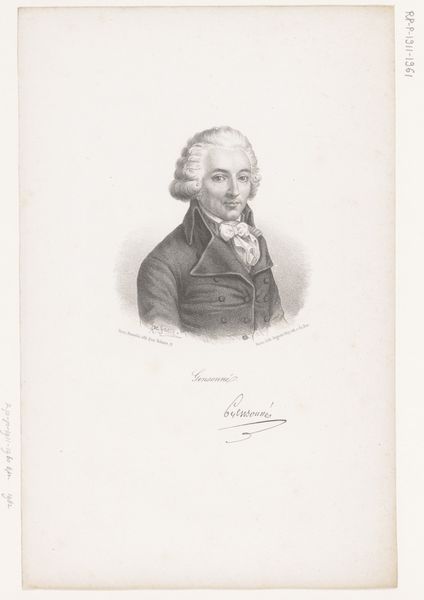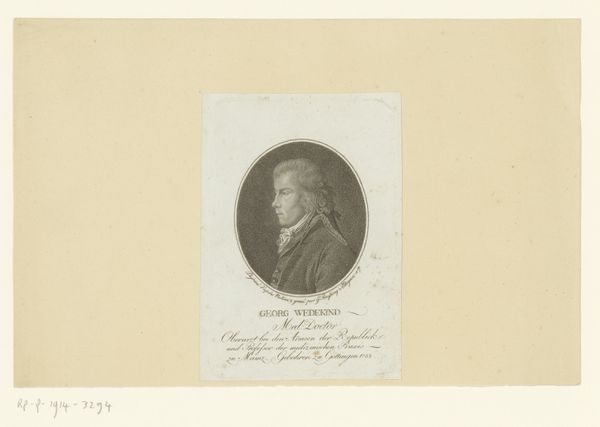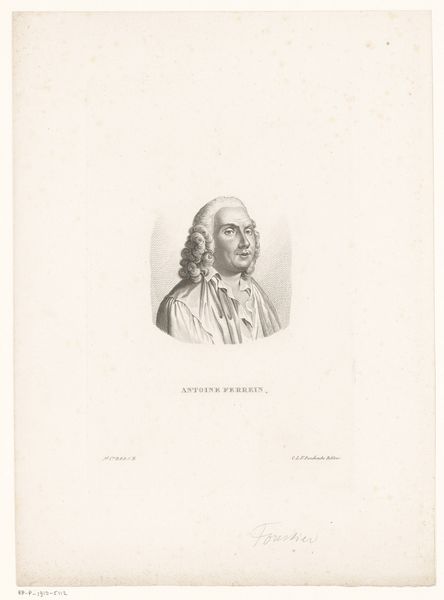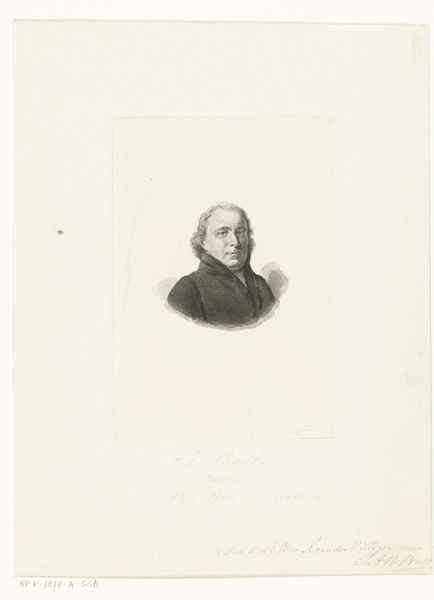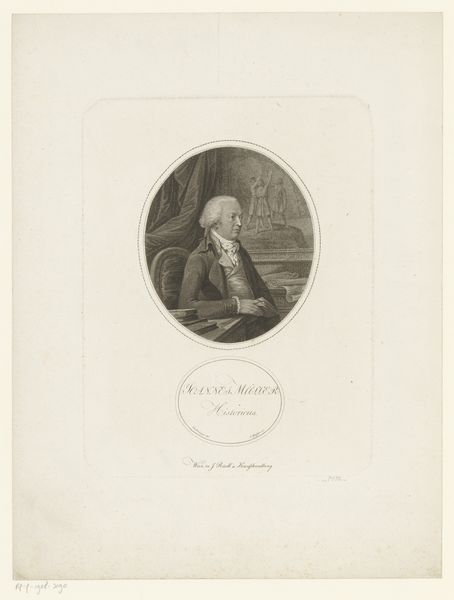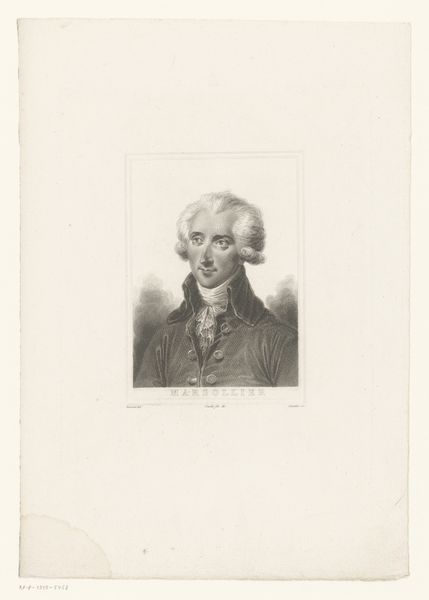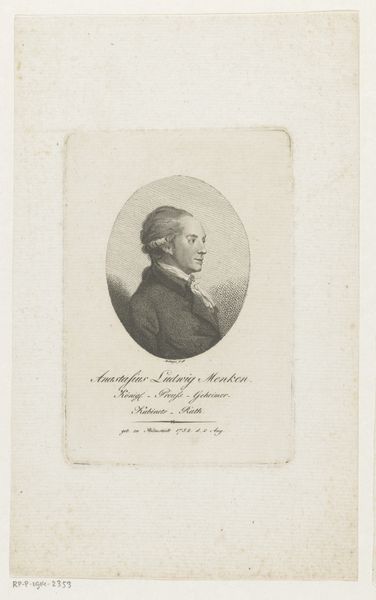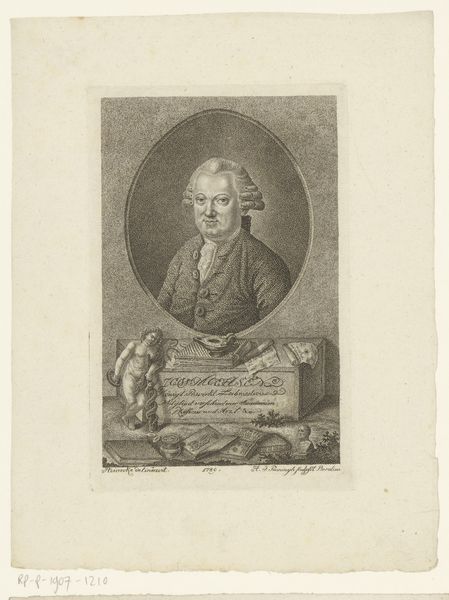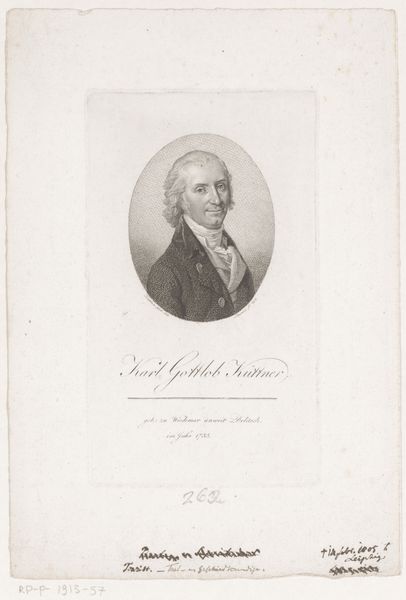
Dimensions: height 197 mm, width 139 mm
Copyright: Rijks Museum: Open Domain
Curator: Welcome. We are looking at the "Portrait of Jean Baptiste Treilhard," an engraving made by Jules Porreau in 1899, during a revival of Neoclassical aesthetics. Editor: It strikes me as starkly formal, a kind of study in muted tones, rendered through that precise line work characteristic of engravings. What can you tell me about the context in which Porreau made this portrait? Curator: Treilhard, the subject, lived during a tumultuous time in France and his life was shaped by revolutionary politics. While he served in various legal and political roles during the Revolution, Directory, Consulate, and Empire, his rise demonstrates the complex navigation of power that was typical for people in the late 18th century. Editor: Interesting. That lends an additional weight to the rather stern expression that Porreau captured so well in his engraving. Tell me more about Porreau, himself? Why look to Neoclassicism so late? Curator: The image itself offers us an interpretation of Treilhard—focusing, as Neoclassicism often does, on idealized form and rationality through the very deliberate technique of engraving. We should notice the line work. The emphasis is clearly on capturing form through clean, precise marks, thus creating an overall composition that speaks of clarity and order. Porreau, though working at the very end of the 19th Century was returning to printmaking strategies of the late 1700s, invoking the visual rhetoric of power that the style offered. Editor: In my mind, seeing it this way draws a stark comparison with the political turmoil of the time. Treilhard, as depicted, appears to embody the very order the revolution sought to destroy, suggesting a deeper tension within French society, as the revolution's impact echoed generations later. But also, to be honest, there is an inherent contradiction. It memorializes a man that benefited, one could say, directly from that revolutionary turmoil. It reveals more complicated social strata beyond a mere desire for change and democracy, something not always clearly revealed. Curator: That friction between Treilhard's legacy and Porreau's deliberate return to the aesthetic of Neoclassicism, perhaps opens up a vital discussion of power, image, and collective memory. Editor: Indeed, a complex intersection of art and historical consciousness. Curator: An engagement with enduring questions, communicated through both line and form.
Comments
No comments
Be the first to comment and join the conversation on the ultimate creative platform.
